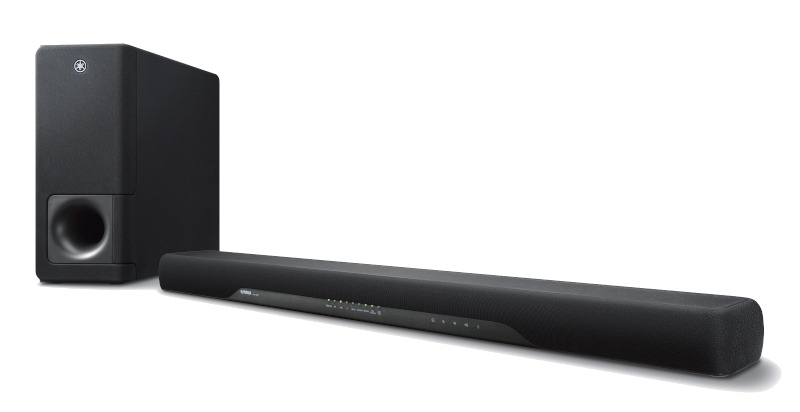Multi-weekend project intro: Putting the fear of AirPlay into Yamaha YAS-207 soundbar
Introduction
Recently I bought a “Yamaha YAS-207” soundbar to replace our old and clunky 2.1 PC-speaker based sound solution for TV and AirPlay.

I’m happy with the sound itself. However —
From the beginning I was hoping to use the Yamaha soundbar both for our TV (that we use for Switch and movies) but also for the AirPlay speaker solution I cobbled together a while ago1.
And before someone asks why didn’t I buy the more expensive YAS-209 (or the even more expensive YSP-2700) that sports the AirPlay natively: well, I like my devices fairly dumb. No Alexa/Google Home/… for me, thank you.
Also, where’s the fun in spending 150 CHF more when you can buy the cheaper version, and then spend multiples of the price difference (and a lot of time) to get a similar feature set?
Anyway.
The purpose of this project is to get AirPlay and TV to work seamlessly with YAS-207. And for that, I need to completely reverse engineer the YAS-207 remote control interfaces first – in order to be able to control the soundbar programmatically.
Hardware overview
The Yamaha YAS-207 has four inputs: HDMI, TOSLINK, Analog (Jack 3.5mm), and Bluetooth.
It sports infrared remote control, and a Bluetooth interface.
The Bluetooth remote control doesn’t have a published protocol, so normally one would be left at the mercy of an Android/iOS app. They call the app “Home Theater controller”.
Plan
The plan is simple: First, reverse engineer the infrared remote because it might be beneficial to have a single remote for both the TV and the soundbar. This part should be a piece of cake.
Next up, reverse the Bluetooth communication protocol.
Finally, make a Raspberry Pi based AirPlay speaker that uses the remote control to automatically adjust the device’s parameters (on/off, input selection, volume, surround settings, etc)
This will follow in a sequence of posts, all tagged with yas 2072.
Execution:
- Part I: Reversing the Yamaha YAS-207 infrared remote protocol
- Part II: Yamaha YAS-207’s Bluetooth protocol: basic recon
- Part III: Streaming Bluetooth Capture Data to Wireshark without Btsnoop Net Support Enabled
- Part IV: Yamaha YAS-207’s Bluetooth protocol: first real progress
- Part V: Yamaha YAS-207’s Bluetooth protocol reversed
- Part VI: Yamaha YAS-207’s Minimal Client (and a Soundbar Fake)
- Part VII: Yamaha YAS-207 vs. Shairport Sync over TOSLINK
All done (for) now.
Update 2021-10-31: Bonus: Reverse engineering of Yamaha SR-C20A.
-
From PC speakers, a raspberry pi, a usb sound card, and a sonoff switch. Because just like one does not simply walk into Mordor, one also doesn’t want the speaker powered on all the time. ↩
-
And should put the Comparison of USB Bluetooth adapters in Linux in its proper context. :-) But I’m getting way ahead of myself. ↩